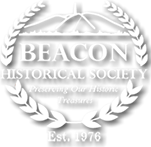Eyewitness Account of Passenger Pigeons Here: Philip Hone's Diary for 1835
"The air was filled with them; their undulation was like the long waves of the ocean in a calm, and the fluttering of their wings made a noise like the crackling of fire among dry leaves."
So wrote Philip Hone in his diary entry for November 4, 1835, after viewing a sight no one shall ever see again--the massive flights of wild passenger pigeons that once darkened the skies over Beacon. Hone, a one-term mayor of New York City (1826), and an investor/director of the old Matteawan Company (located about where the One East Main Street building is today), was in the village of Matteawan on one of his semi-annual visits here from his home in New York to view his cotton-cloth factory and to check the account books of the company. Looking up in the sky, Hone wrote:
"The mighty army came from the west, and crossing the valley where I was, passed the top of the mountains. Every man and boy in the Matteawans who could get a gun, and was willing to lose part of a day's work in the factory, sallied out on murder bent; pigeon pie became an unexpected dish on many a table."
Hone noted in his diary that he was happy to have witnessed this spectacle on wing for the first time in his life, for now he would be able "to talk 'pigeon' with Audubon, in his own language."
Despite the mass slaughter of the birds in this time period, big flocks of the passenger pigeon were still being recorded in Dutchess County right up until 1875, according historian Arlie Schorger. But most naturalists agree that by 1898, the passenger pigeon was extinct in New York State.


